What is the Manufacturing Process of Car Door Panels?
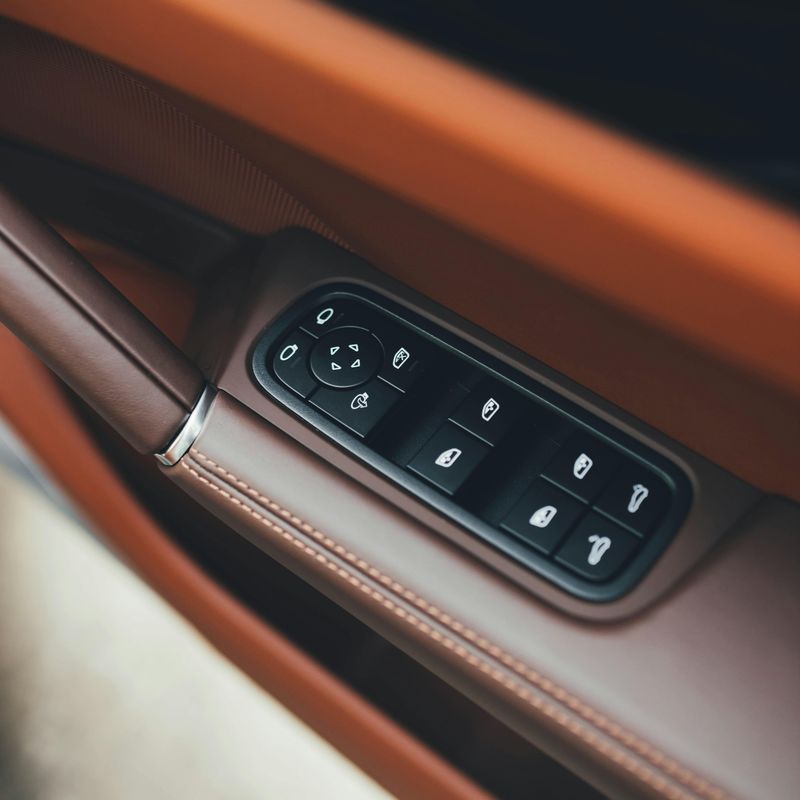
Have you ever wondered how car door panels are made? These everyday parts of a vehicle might seem simple, but they're the result of an amazing process that blends creativity, engineering, and modern technology.
We're excited to take you behind the scenes to explore how these essential components come to life. Whether you're a car lover or just curious, learn how cutting-edge car door panel manufacturing impacts your carʼs safety and efficiency.

Table of Contents
Materials Used in Car Door Panels
Injection Molding of Door Panel Skeleton
Coating and Preparation of Handrails
Welding and Assembly of Door Panel Components
Hemming and Joining Outer and Inner Panels
Rust Proofing, Painting, and Protective Treatments
Quality Control and Testing of Door Panels
FAQs
Conclusion
Materials Used in Car Door Panels
Choosing the right material for auto door panel manufacturing is like picking the perfect ingredient for a recipe—it has to be just right to make sure the car is strong, lightweight, and looks good. The materials used can affect how safe the car is, how quiet it feels inside, and even how much gas it uses.
Plastics: The Versatile Choice
Plastics are super popular for interior car door panels — the parts you see and touch inside the car. Plastics can be molded into cool designs, like armrests or speaker spots, and they're lightweight, which helps the car save fuel.
Two common plastics are ABS (a tough, hard plastic) and polypropylene (a flexible one that doesn't get damaged by chemicals easily). ABS plastic withstands temperatures up to 80°C, ideal for harsh climates.
Metals: The Sturdy Backbone
For exterior door panels—the outside part that protects the car—metals are the top pick. They're like the car's shield, keeping you safe with their strength. The two big ones are aluminum and steel.
Aluminum is lighter, so it helps the car use less gas, while steel is super strong and usually costs less. Aluminum alloys also comply with ASTM B209 for automotive applications. Carmakers choose between them based on what the car needs.
Composites: The High-Tech Option
In fancy or super-fast cars, composites are often used for door panels. These are like the high-tech superheroes of materials—strong but not heavy. Examples include carbon fiber (really light and tough) and fiberglass (strong and a bit cheaper).
They help race cars zoom faster or make luxury cars feel special, but they cost more. Composites are perfect when saving weight is a big deal.
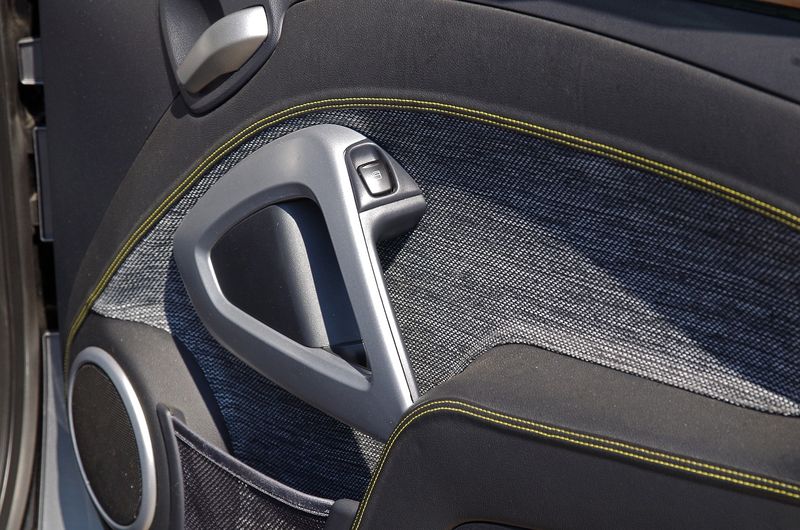
Recent Trends: Going Green and Getting Lighter
Lately, carmakers are trying to make door panels better for the planet. They're using recycled plastics (like old bottles) or bio-based materials (made from plants) to cut down on waste.
Plus, they're working on new materials that are even lighter and stronger to make cars safer and more fuel-efficient.
Injection Molding of Door Panel Skeleton
Injection molding is like magic for car door panel manufacturing—it's the process where we turn plastic pellets into the sturdy skeleton of the panel. This skeleton is the backbone that holds everything together, like the frame of a house.
Step 1: Preparing the Plastic
First, we start with tiny plastic pellets, usually made from materials like ABS or polypropylene. We heat them until they melt into a gooey liquid, ready to be shaped.
Step 2: The Mold—Where the Magic Happens
Next, we have a special mold that's shaped exactly like the door panel skeleton we want to make. This mold is made of super-strong metal and has two halves that fit together perfectly.
We pour the melted plastic into this mold, filling every little corner and detail. Melting pellets at 220-280°C under 1,500 psi pressure.
Step 3: Cooling and Hardening
Once the plastic is inside the mold, we cool it down quickly. This makes the plastic harden and take the shape of the mold.
It's like when you put a popsicle in the freezer—it turns from liquid to solid in just the right form. After it's cool, we open the mold and pop out the door panel skeleton, ready for the next steps.
Step 4: Checking for Perfection
Finally, we check the skeleton to make sure it's perfect. We look for any bumps, rough spots, or mistakes. If everything looks good, it's ready to be put together with other parts of the door panel.
Coating and Preparation of Handrails
Handrails are the parts of the car door panel that you touch when you close the door or rest your arm. They need to look good and feel comfortable, so we coat them with special materials.
Coating and preparing the handrails makes them look nice, feel smooth, and last longer. Ceramic nano-coatings enhance scratch resistance by 40%.
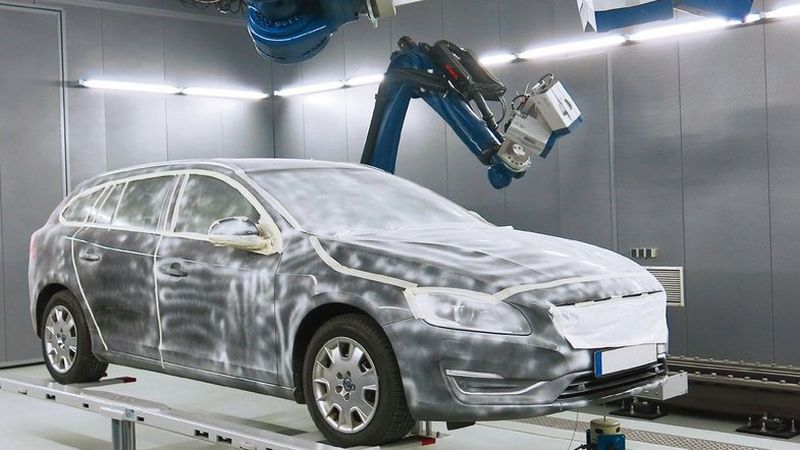
Depending on the car model, we might use different coatings. For fancy cars, we might use soft leather or faux leather to make the handrails feel luxurious. For sporty cars, we might use textured plastic that looks cool and is easy to clean. Textured grips improve ergonomics in sports models.
First, we clean the handrails to remove any dirt or grease, similar to the cleaning process in exterior painting. Then, we might sand them to make the surface smooth. Sanding helps to smooth out any rough spots, making the surface even and ready for coating.
After that, we apply the coating carefully, making sure it covers everything evenly. Applying the coating is a careful process. We use special tools to make sure the coating is spread evenly.
Welding and Assembly of Door Panel Components
When we make car door panels, we need to join different parts together, like the main frame, and other pieces like insert panels and sound-absorbing materials.
To do this, we use a process called welding. Welding is like gluing things together, but instead of glue, we use heat or sound waves to make the materials stick permanently.
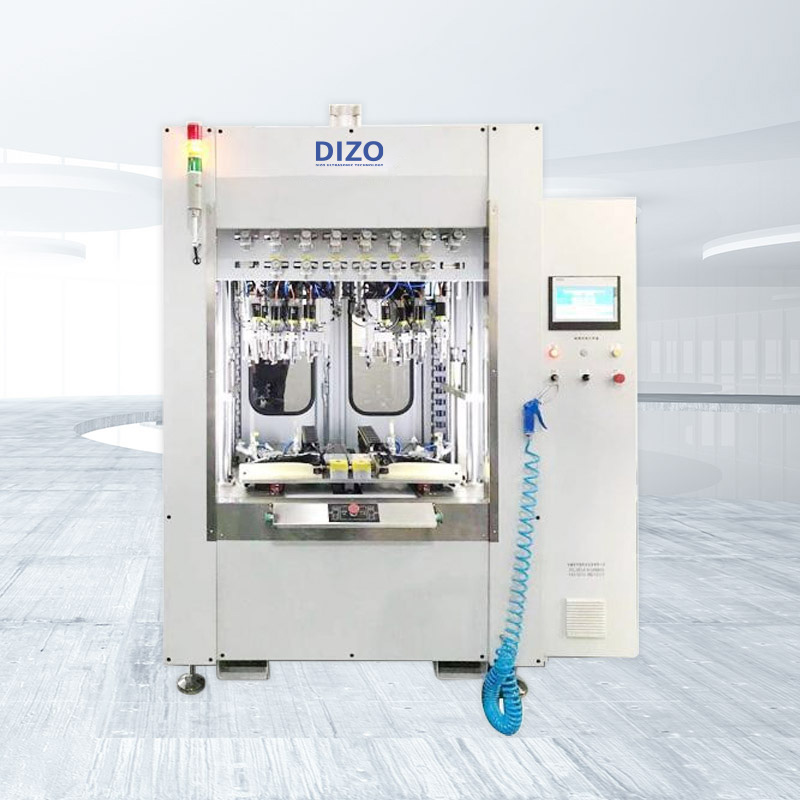
There are two main ways we weld these parts together: hot rivet welding and ultrasonic welding.
Hot rivet welding is like using a hot glue gun. We heat metal rivets, which are like tiny nails, and use them to join the parts. The heat melts the rivets, and when they cool down, they hold everything together tightly.
Ultrasonic welding is a bit more advanced. It uses sound waves to create friction and heat, which melt the materials and join them together. It's like using a special tool that vibrates super fast to stick the parts without any glue or rivets.
To make sure the welding is done quickly and perfectly, we use automatic welding machines. These machines are like robots that can weld hundreds of parts in a short time.
Robotic arms follow precise programming, ensuring consistent and accurate welds every time. Automated systems can operate continuously without fatigue, greatly improving auto door panel manufacturing efficiency. Robots deliver the same quality for every piece, reducing defects and rework.
Hemming and Joining Outer and Inner Panels
Once the outer and inner panels of a car door are shaped and ready, it's time to join them together. The outer panel is the part you see on the outside of the car, while the inner panel faces the inside.
What is Hemming?
Hemming is a technique where the edges of the outer panel are folded over the inner panel to lock them together. Think of it like folding the edges of a piece of paper to make it stronger.
This folding creates a tight, seamless bond that makes the door sturdy and helps it last a long time. The strength of hemming is 15% higher than that of conventional welding.
How Do We Join the Panels?
There are several ways to join the outer and inner panels, and sometimes we use more than one method to make sure everything holds together really well. Here are the main ones:
- Adhesives: We spread the adhesive between the panels, and when it dries, it forms a tough bond that keeps them together. Epoxy adhesives require 24-hour curing for maximum strength.
- Welding: This is like melting the metal edges of the panels together. Using heat, we fuse them into one solid piece, making the connection extra strong.
- Mechanical Fasteners: These are small things like screws or rivets that hold the panels in place. They're similar to nails you'd use to keep a picture frame together.
Rust Proofing, Painting, and Protective Treatments
Once car door panels are shaped and put together, they need protection from the weather and a cool look.
Rust Proofing: The Invisible Shield
Rust is like a sneaky enemy that attacks metal when it gets wet. Over time, water and air can make the metal corrode and weaken. To stop this, we use rust-proofing treatments. These act as cathodic protection.
One trick is to coat the metal with special liquids that dry into a tough layer. Another is using galvanized metal, which already has a built-in protective coat. Galvanized steel meets ISO 9227 corrosion resistance standards. Proper rustproofing extends door lifespan by 10 years.
Painting: More Than Just Color
Painting does more than make the car look awesome—it also keeps the metal safe. The paint is like a wall that blocks scratches, rain, and sun damage. Here's how it happens:
Cleaning and Priming: First, the panels are washed to get rid of dirt or oil. Then, a primer goes on. Primer is like a sticky base coat that helps the paint hold tight.
Adding Paint: Next, layers of paint are sprayed on—sometimes by robots for a perfect finish! Water-based paints reduce VOC emissions by 50%.
Clear Coat: Finally, a clear coat is added. This shiny layer protects the paint and makes the car sparkle.
Protective Treatments: Extra Armor
For even more protection, we add special treatments like sealants or coatings. These are like sunscreen for your car, guarding against UV rays from the sun or little scratches. They help the door panels stay shiny and new, no matter what the road throws at them.
Quality Control and Testing of Door Panels
We believe that car door panel manufacturing isn't just about building something that looks good—it's about ensuring every panel is safe, tough, and works perfectly every time you use it. That's where quality control and testing come in.
This step is like the final check before your car door panel gets our stamp of approval. We put every panel through its paces to make sure it's ready for the road.
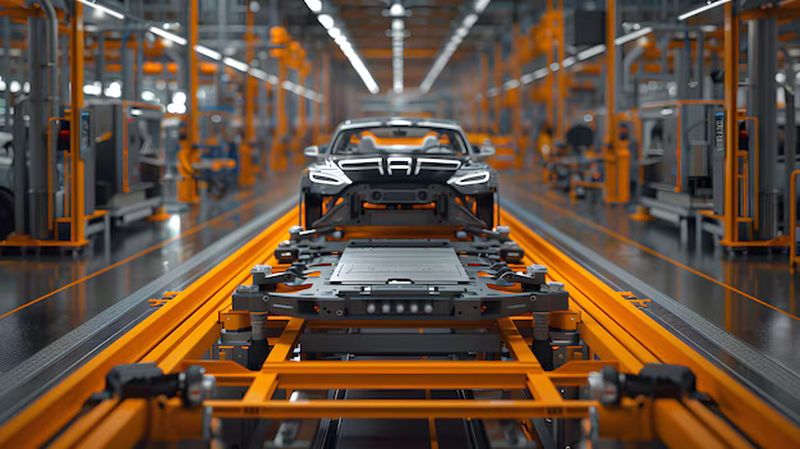
Our Testing Process
We use a mix of cutting-edge tech and hands-on checks to make sure our door panels are the best they can be. Here's how we do it:
- Checking the Fit: We use robotic cameras to snap pictures of each panel from all angles. This helps us see if everything lines up perfectly. If something's off, we fix it right away.
- Testing Strength: We put our panels through tough ISO 9001-compliant stress tests to see how much they can handle. We check if they can take a hit without breaking and if they'll hold up in crazy weather. This way, we know they'll last for years.
- Making Sure Everything Works: Since panels have moving parts like windows and locks, we test those too. We roll the windows up and down and click the locks over and over to make sure they're smooth and dependable.
- Fatigue Testing: We simulate years of use in a short time by cycling the panel components thousands—even millions—of times. This helps identify potential weaknesses before the product reaches the customer.
- Climate Simulation: Panels are exposed to extreme conditions—heat, cold, humidity, UV rays—to see how they perform over time. This ensures that whether it's desert heat or freezing winters, our panels stay strong.
- Water Ingress & Corrosion Resistance Tests: We test for leaks and corrosion to ensure the panel seals hold up in heavy rain and moist environments.
FAQs
Do you have questions about car door panels? We've got answers! Below, we tackle some of the most common questions people ask about car door panels.
What is the car door panel called?
The part of your car door that you see and touch from the inside is called the door panel or sometimes the door card.
What to use for interior door trim?
The best choice depends on your car's style and how much wear and tear it'll face. Here are some popular materials we recommend:
- Plastic: Lightweight, durable, and easy to clean. It's a go-to for many cars because it can handle daily use without showing much wear.
- Wood: If you're after a classy, upscale vibe, wood trim adds a touch of elegance. Just keep in mind it might need a little extra care to stay looking sharp.
- Fabric: Soft and comfy, fabric trim is great for a cozy feel. It's often used in luxury cars but can wear out faster if not maintained.
Can you replace a car door panel?
Yes, you can replace a car door panel, but it's not always a walk in the park. Whether it's doable depends on your car's make and model, as well as what's wrong with the panel. Here's what you need to know:
- DIY or pro?: If the panel is just scratched or worn, you might be able to swap it out yourself with some basic tools. But if it's damaged from a crash or has electrical components (like power windows), it's usually best to let a professional handle it.
- Finding the right part: Make sure to get a panel that fits your exact car model. A mismatched panel can cause headaches like windows not rolling down properly or locks not working.
- Time and patience: Replacing a door panel involves removing screws, clips, and sometimes wiring. It can take a while, so if you're not handy with cars, it's worth paying a pro to do it right.
What style of interior doors are in style?
Styles change with each car brand and model year. Right now, many carmakers are going for sleek, minimalist designs with clean lines and hidden features.
Think smooth surfaces, fewer buttons, and high-tech touches like touch-sensitive controls. Some luxury cars even use fancy materials like carbon fiber or brushed metal for a premium feel.
How much does it cost to replace a car door panel?
The cost to replace a car door panel can vary a lot, depending on your car and what needs fixing. Here's a rough idea:
- Basic replacement: For a simple panel swap on a standard car, you might pay between $100 and $300 for the part, plus $100 to $200 for labor if you're not doing it yourself.
- Luxury or complex panels: If your car has fancy features like built-in speakers or custom materials, the price can jump to $500 or more for the panel alone.
- DIY savings: If you're handy and can find a used or aftermarket panel, you might spend as little as $50 to $150 on the part and save on labor.
Conclusion
Everything you need to know about auto door panel manufacturing, from start to finish! We've taken you through the entire journey, from choosing the right materials to the final quality checks that ensure every panel is ready for the road.
But here's the thing: car door panel manufacturing isn't just about following these steps. It's about doing them better than anyone else. That's where Dizo Global shines.
We're not just another automotive door panel manufacturer—we're innovators who use the latest technology to push the boundaries of what's possible. Whether it's our robotic precision in assembly or our use of sustainable materials like bioplastics, we're always looking for ways to make our panels lighter, stronger, and greener.






